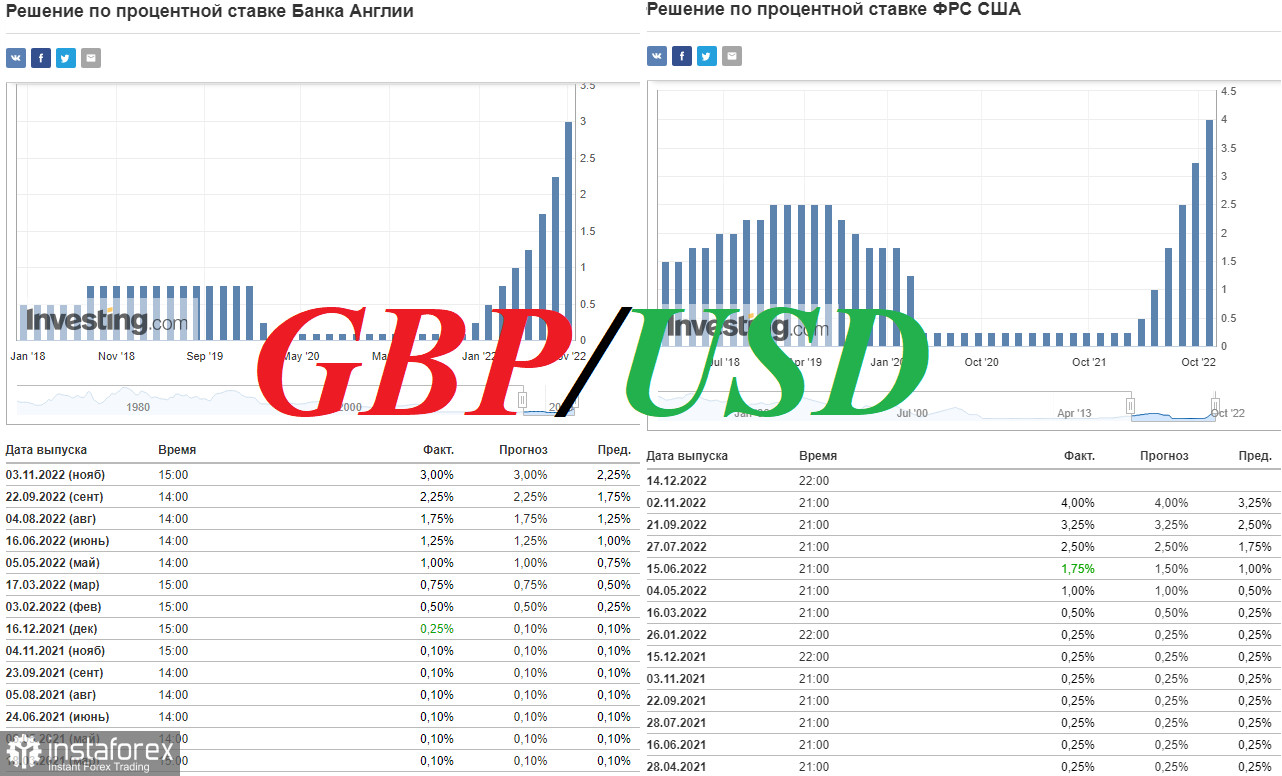
Earlier today, macro statistics for Germany, Eurozone and UK came out quite positive: preliminary PMIs were better than forecasted.
For example, the UK manufacturing PMI for November came in at 46.2 and services PMI at 48.8. The data turned out to be better than the forecast of 45.8 and 48.0, respectively, but remained below the value of 50.0 (a result above 50 is considered positive and strengthens the GBP, below 50 is negative for the GBP).
German and Eurozone PMIs also observed similar situation: the data was better than expected but remained below 50.0.
GBP and EUR tried to develop a positive dynamic against USD, but soon after the publication of the PMI indices, the mood of the bulls came to naught.

As of writing, EUR/USD and GBP/USD are down again. EUR/USD is close to the opening price of today's trading day and to the level of 1.0300, risking to move into the negative intraday territory. GBP/USD is near 1.1920, trying to hold above the long-term support at 1.1885. Note that GBP/USD has been developing an upward trend since late September, taking advantage of both the dollar weakness and the measures taken by the Bank of England to support the market of British government bonds.
As you know, at the end of September, the Bank of England unexpectedly intervened in the bond market trading to prevent the impending market crash. For example, the collapse of the British government bond prices has led to the fact that the yield on 30-Year Treasury Gilt bonds has jumped to its highest level since 1998, exceeding 5%.
Thus, according to Bloomberg, the Bank of England bought up Treasury Gilt with maturities of 20 years or more on September 28 for more than 1 billion pounds, and promised to buy long-term government bonds for another 65 billion pounds.
"Purchases will be carried out in any necessary scale," said the Bank of England. Before that, it was planned to start a program of selling government bonds in the amount of 838 billion pounds, which was supposed to start in early October, but the ill-conceived policy of the new cabinet of the then Prime Minister Liz Truss to cut taxes and increase spending led to a sharp drop in the British government bond market and pound quotes.
Economists said that the UK financial system was hours away from a grand collapse. There is quite a lot of information on this subject in the public domain. Note that now, as economists believe, the Bank of England will have to increase rates even more than previously planned, driving the British economy deeper into recession. And this does not exclude the fact that the British government bonds, and with them the pound prices, will eventually beat the September anti-records.
However, now the situation on the global financial market is changing so quickly and unexpectedly that to make long-term or at least several months ahead forecasts becomes a completely hopeless business. Short-term, at the best, medium-term forecasts based on technical analysis of every currency pair's dynamics become urgent.
As for the economic news for today regarding the GBP/USD pair, one should pay attention to the publication (at 13:30 GMT) of the reports of the US Department of Labor with weekly data on the jobless claims, S&P Global with PMI business activity indices, as well as the US Census Bureau with data on orders for capital goods and durable goods.
And at 19:00, the minutes of the November meeting of the Fed will be published, which may contain additional information regarding the prospects for the monetary policy of the US central bank. Many market participants and economists believe that already at the December meeting, the Fed may go for an increase in interest rates by 0.50%, and not by 0.75%, as before. However, another significant portion of investors expect the Fed to continue its monetary tightening cycle at the same pace, with US inflation still well above its 2.0% target.
At the same time, the Fed's interest rate is currently at 4.00%, and the Bank of England is at 3.00%, which is still a strong argument in favor of the dollar against the pound, given also the much better state of the US economy compared to the UK.
 English
English 
 Русский
Русский Bahasa Indonesia
Bahasa Indonesia Bahasa Malay
Bahasa Malay ไทย
ไทย Español
Español Deutsch
Deutsch Български
Български Français
Français Tiếng Việt
Tiếng Việt 中文
中文 বাংলা
বাংলা हिन्दी
हिन्दी Čeština
Čeština Українська
Українська Română
Română

